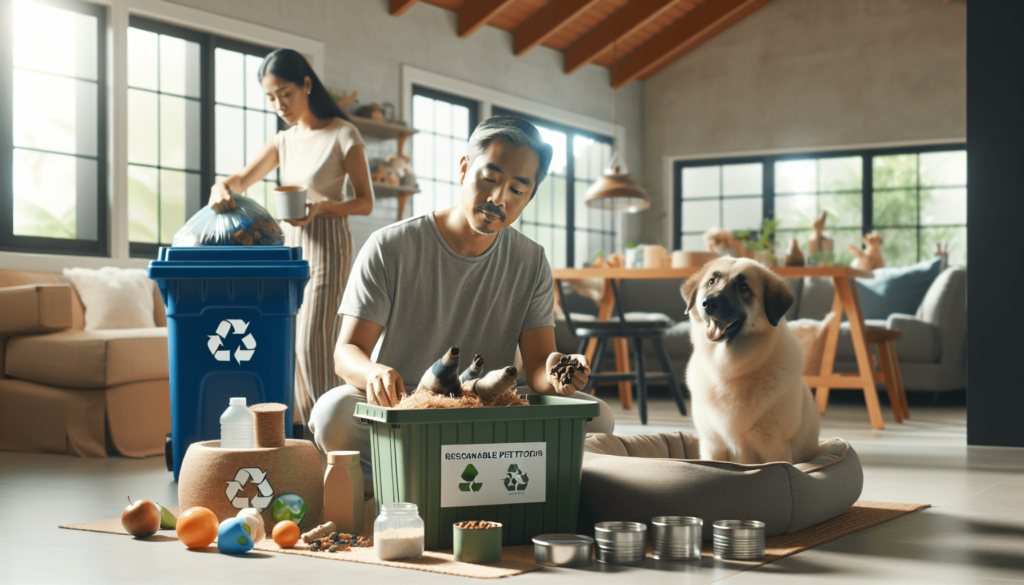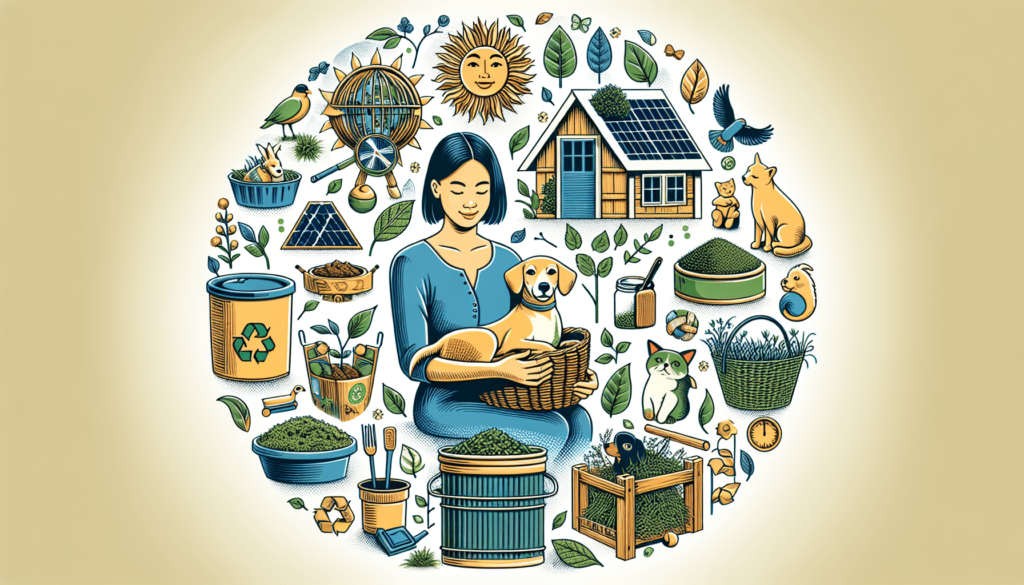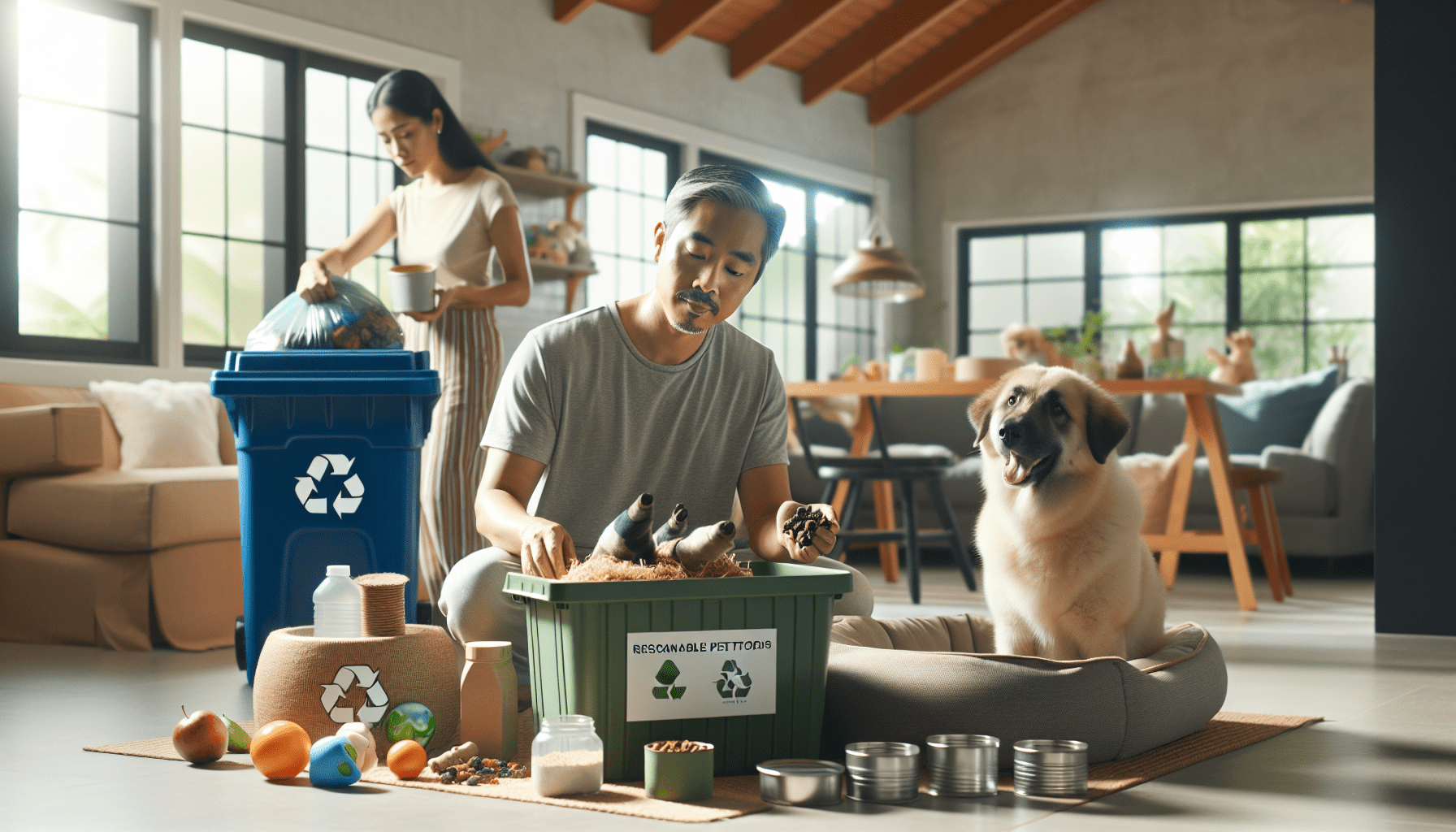If you’re a pet owner who is also passionate about the environment, then “Green Pet Care: Sustainable Practices for Pet Owners” is a must-read article for you. This informative piece will enlighten you on a variety of sustainable practices that you can easily incorporate into your pet care routine. From eco-friendly pet products to earth-conscious waste management strategies, this article provides a wealth of practical tips and ideas to help you reduce your carbon footprint while giving your furry friend the best care possible. Get ready to discover how you can make a positive impact on the planet without compromising the happiness and well-being of your beloved pet.
Sustainable Pet Food
Pet owners are increasingly becoming aware of the impact their pets’ food can have on the environment. When choosing pet food, it’s important to look for brands that prioritize sustainability in their production methods. These eco-friendly pet food brands often prioritize using responsibly sourced ingredients and minimize their carbon footprint in the manufacturing process. By opting for sustainable pet food brands, you can ensure that your furry friend’s meals are not only healthy but also environmentally friendly.
In addition to choosing sustainable brands, opting for pet food made with organic and locally sourced ingredients can further contribute to a more sustainable pet food industry. Organic ingredients are grown without the use of synthetic fertilizers or pesticides, which helps to minimize harm to the environment. Locally sourced ingredients also reduce the carbon emissions associated with long-distance transportation.
For those who are more adventurous and have the time, homemade pet food can be a great option. Making your own pet food allows you to have full control over the ingredients used and ensures that you are minimizing packaging waste. Additionally, homemade pet food often uses human-grade ingredients, which can be fresher and higher in quality than commercial options.
Eco-Friendly Pet Supplies
Just like with food, choosing eco-friendly pet supplies can have a positive impact on the environment. When it comes to toys, opt for those made from sustainable materials such as organic cotton, hemp, or recycled materials. Not only will these toys be safer for your pet, but they will also be more biodegradable and reduce waste when they reach the end of their life cycle.
Another important eco-friendly choice is selecting natural and biodegradable litter. Traditional cat litter is often made from clay, which is not only detrimental to the environment but also harmful to your pet’s health. Instead, look for litters made from materials such as recycled paper, wood pellets, or corn. These options are more biodegradable, reduce the carbon footprint, and are healthier for your furry friend.
Investing in eco-friendly collars and leashes is also an important consideration. Many pet accessories are made from materials such as nylon, which is not biodegradable and can contribute to plastic waste. Opt for collars and leashes made from natural materials like hemp or bamboo, which are more sustainable and environmentally friendly.

Reducing Waste
Pet waste is a significant contributor to environmental pollution. However, there are several steps you can take to minimize the environmental impact of your pet’s waste. One easy change is to use compostable poop bags. These bags are made from biodegradable materials and break down naturally in composting systems. By choosing compostable bags, you can prevent plastic waste from accumulating in landfills and contribute to nutrient-rich compost for your garden.
For cat owners, considering biodegradable cat litter is another essential step in waste reduction. Traditional clay-based cat litter is not biodegradable and sits in landfills indefinitely. Alternatively, choose litters made from natural materials, like pine, wheat, or recycled paper. These options biodegrade naturally and reduce the environmental impact of your cat’s waste.
Additionally, consider using reusable pet waste removal tools, such as scoops or rakes. These tools eliminate the need for single-use plastic waste and are a more sustainable option for cleaning up after your pet. By choosing reusable tools, you can significantly reduce the amount of waste associated with pet waste removal.
Water Conservation
Conserving water is another important aspect of sustainable pet care. One simple change you can make is to provide fresh tap water for your pet instead of relying on bottled water. Bottled water not only contributes to plastic waste but also requires significant resources for production and transportation. By offering tap water, you can reduce your pet’s carbon footprint and minimize plastic waste.
If you’re looking to take water conservation a step further, consider collecting and reusing rainwater for your pet’s needs. Install rain barrels or similar systems to collect rainwater and use it for activities like watering your pet’s plants or cleaning their toys and bowls. Not only does this reduce reliance on treated water, but it also helps to conserve resources and lower water usage overall.
Another option for reducing water waste is to install a faucet attachment that reduces water flow during bath time. These attachments regulate water usage and can significantly reduce water waste while still ensuring your pet gets a thorough cleaning. By being conscious of water usage, you can minimize your pet’s environmental impact and contribute to a more sustainable lifestyle.

Sustainable Grooming Practices
Grooming your pet is an essential part of their care routine, and you can make it more sustainable by making a few simple changes. One easy step is to choose natural and biodegradable shampoos. Many commercial pet shampoos contain harsh chemicals that can be harmful to both your pet and the environment. Opt for shampoos made from natural, plant-based ingredients that are gentle on your pet’s skin and don’t introduce harmful substances into the environment.
Reducing water usage during bath time is another crucial consideration. While it’s important to keep your pet clean, excessive water usage can contribute to waste. Consider using a water-saving showerhead or filling a basin with water instead of running a constant stream during the bath. By using less water, you will minimize your pet’s water footprint and reduce water waste.
You can also choose eco-friendly grooming tools, such as brushes and combs made from sustainable materials like bamboo or recycled plastic. Additionally, opt for grooming products that come in recyclable packaging to further minimize waste. By incorporating these sustainable grooming practices, you can provide excellent care for your pet while reducing their environmental impact.
Environmentally Friendly Pet Waste Disposal
Properly disposing of pet waste is essential for both environmental and public health reasons. To make pet waste disposal more sustainable, consider installing a pet waste digester in your yard. These systems break down pet waste naturally, eliminating the need for plastic bags or flushing waste down the toilet. By composting pet waste on-site, you can create nutrient-rich soil amendments for your garden while diverting waste from landfills.
Another option for pet waste disposal is worm composting. This method involves using specially designed bins and composting worms to break down pet waste. Worm composting is a natural and odorless way to convert pet waste into nutrient-rich vermicompost. However, it’s important to note that worm composting should not be used for cat waste, as it can contain harmful bacteria.
For cat owners, considering flushable cat litter is also a sustainable option. There are various flushable cat litters available on the market that are specifically designed to break down in water. However, it’s crucial to ensure that the litter you choose is safe for flushing and does not contain harmful additives. By responsibly using flushable cat litter, you can minimize waste and contribute to a more sustainable pet care routine.
Green Pet Toys and Accessories
Choosing sustainable and non-toxic pet toys is not only better for the environment but also safer for your furry friend. Opt for toys made from natural and sustainable materials like organic cotton, hemp, or recycled materials. These options are free from harmful chemicals and reduce waste when they reach the end of their life.
When it comes to pet beds and beddings, choose eco-friendly options. Look for beds made from recycled materials or those that use sustainable fabrics like organic cotton or bamboo. Additionally, opt for beddings made from materials like recycled polyester or natural fibers. By choosing sustainable materials, you can provide your pet with a comfortable and safe sleeping environment while minimizing your environmental impact.
Choosing pet carriers made from recycled materials is another way to reduce your pet’s carbon pawprint. Many brands now offer carriers made from recycled plastics or other sustainable materials. By opting for these carriers, you can minimize waste and support a more sustainable pet care industry.
Reducing Carbon Pawprint
Reducing your pet’s carbon pawprint can be both fun and rewarding. Instead of relying solely on cars for exercise, consider taking walks with your pet. Not only is this a great way to bond with your furry friend, but it also reduces carbon emissions associated with car travel. Explore nearby parks and trails to give your pet plenty of exercise while minimizing their environmental impact.
On outdoor adventures, be sure to carry reusable water bottles and snack containers. This reduces the need for single-use plastic bottles and packaging. Look for durable and eco-friendly options made from stainless steel or BPA-free materials. By using reusable containers, you can reduce waste and ensure that you and your pet stay hydrated and fueled during your outings.
Supporting local businesses for pet supplies is another way to reduce your pet’s carbon pawprint. By purchasing from local pet stores, you support the local economy and reduce the environmental impact of long-distance transportation. Many local pet stores also prioritize sustainable practices and offer eco-friendly products. Supporting these businesses not only benefits your pet but also the planet.
Natural Pest Control
When it comes to keeping pests away from your pet, opting for natural prevention methods is a safer and more sustainable choice. Instead of using chemical-based flea and tick treatments, consider natural alternatives. There are many pet-safe products available that use ingredients like essential oils or cedar oil to repel pests. Be sure to follow the instructions carefully and consult your veterinarian to ensure the safety and effectiveness of these products for your pet.
Another natural pest control option is considering beneficial insects. For example, introducing nematodes in your yard can help control fleas and other pests. Nematodes are microscopic organisms that prey on pests while being harmless to humans and pets. By embracing natural pest control methods, you can reduce the use of harmful chemicals and create a safer environment for your pet.
Essential oils can also be used as a natural flea repellent. Certain essential oils, such as lavender or peppermint, have natural insect-repellent properties. However, it’s important to use essential oils safely and in appropriate dilutions for pets. Consult with a veterinarian or an experienced aromatherapist to ensure the correct and safe use of essential oils for your pet.
Supporting Sustainable Pet Adoption
Adopting a pet from a shelter or rescue organization is one of the most sustainable decisions you can make as a pet owner. By choosing to adopt, you provide a loving home for an animal in need, reducing the demand for pet breeding and the associated environmental impact. Shelters and rescues often have a wide variety of animals looking for forever homes, so you can have your pick of different species, breeds, and sizes.
If you’re not ready or able to commit to a permanent pet, fostering animals in need is an excellent alternative. Fostering helps to alleviate overcrowding in shelters and provides temporary care for animals until they find their forever homes. By becoming a foster pet parent, you can make a significant impact on an animal’s life and contribute to a more sustainable pet care system.
Finally, donating to animal welfare charities is another way to support sustainable pet adoption. These organizations work tirelessly to rescue and care for animals in need, and financial donations can go a long way in providing food, medical care, and shelter for animals awaiting adoption. By supporting these charities, you directly contribute to the well-being of animals and promote sustainability in the pet care industry.
In conclusion, adopting sustainable practices for pet care is not only beneficial for the environment but also for the health and wellbeing of your furry friend. By choosing eco-friendly pet food brands, opting for sustainable supplies and accessories, reducing waste, conserving water, practicing sustainable grooming, implementing environmentally friendly waste disposal methods, selecting green toys and accessories, reducing your pet’s carbon pawprint, using natural pest control, and supporting sustainable pet adoption, you can make a positive impact on the planet. So embrace these sustainable practices and create a healthier and more environmentally friendly lifestyle for both you and your beloved pet.

